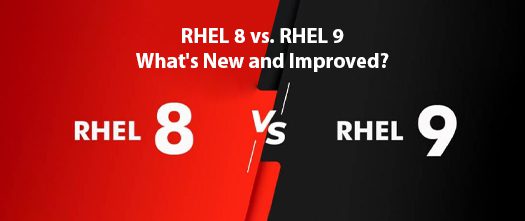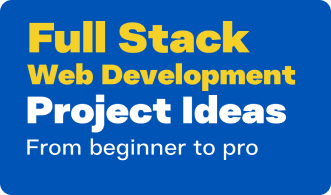Red Hat Enterprise Linux (RHEL) reigns preeminent in the ever-changing business computing landscape. RHEL is a sturdy platform that helps numerous enterprises develop their computerized aspirations, created with accuracy by the geniuses at firms.
Imagine a platform that marries unyielding stability with a boundless spirit of innovation. That’s the magic of RHEL. It’s not hastily thrown together; it’s a masterpiece, carefully molded from the open-source Fedora project and refined through relentless testing.
Why RHEL is the Crown Jewel of Enterprise IT:
A Decade-Long Promise: RHEL isn’t here for a short fling; it’s in it for the long haul. With up to a decade of support for every major release, you can kiss those stressful, frequent migrations goodbye.
Security Fort Knox: Security isn’t just a checkbox; it’s the heartbeat of RHEL. Regular security updates, impenetrable defenses, and the formidable SELinux integration make RHEL a digital fortress for your most sensitive data.
Flexibility at Its Finest: RHEL is the ultimate chameleon. It dances gracefully with a diverse cast of software and hardware, ensuring your tech ecosystem stays agile and versatile.
Stay Ahead of the Curve with RHEL:
In a tech world that never sleeps, staying stagnant is the surest path to obsolescence. RHEL understands this, which is why each new release is a treasure chest of innovations:
Embracing the Future: RHEL keeps pace with cutting-edge hardware, ensuring compatibility with the latest tech marvels to maximize your investments.
Container Magic: The container revolution is here, and RHEL is leading the charge. It’s your ticket to unlocking the true potential of containerized computing and Kubernetes orchestration.
Compliance Made Simple: Regulatory hurdles? Not a problem. RHEL updates come equipped with enhancements that keep you in the good graces of the law.
The Red Hat Ecosystem: To thrive in the Red Hat universe, you need the right key. Staying current ensures that you are a member of the innermost group, with a knowledge of the entire range of Red Hat’s offerings and amenities.
So, whether or not you’re looking to protect your data, ride the tide of technological developments, or simply choose a dependable companion for your IT journey, keep Red Hat Enterprise Linux in mind. It’s not just an operating system; it’s your passport to a future-proof, innovation-driven IT landscape. In this essay, we will hear about RHEL 8 as well as RHEL 9 in depth, as well as the elements and features that distinguish them.
RHEL 8: Key Features and Improvements
1. Enhanced Performance and Scalability
Red Hat Enterprise Linux 8 includes numerous enhancements in areas like stability, safety, development of applications, customer experience, as well as subscriber monitoring. These improvements enable RHEL 8, the latest version, to be an appealing option for businesses looking for a stable, safe, and productive platform for managing their computer networks.
- Introduction to Performance Improvements:
RHEL 8 places a strong emphasis on performance improvements, recognizing that speed and efficiency are critical in modern computing environments. The foundational kernel was specially tuned for improved startup times as well as lower network latency, culminating in improved program response rates. This is particularly pertinent for businesses that operate real-time as well as exceptionally well applications.
- Scalability Enhancements in RHEL 8:
Scalability is vital for businesses dealing with growing workloads and user demands. RHEL 8 addresses this by introducing enhancements like enhanced support for Non-Uniform Memory Access (NUMA) systems. NUMA optimization allows for better resource allocation, ensuring that applications can efficiently utilize available CPU and memory resources in multi-socket systems.
2. System Security and Compliance
- Security Features in RHEL 8:
RHEL 8 bolsters system security with a range of features. One standout addition is the inclusion of Stratis, a local storage management tool that simplifies data protection and management. Stratis helps safeguard critical data with features like encryption and monitoring while making storage administration more accessible.
- Compliance and Security Policies:
RHEL 8 also focuses on compliance and security policy management. It offers tools to create, customize, and enforce security policies to meet industry-specific or internal regulatory requirements. The introduction of OpenSCAP and SCAP Security Guide simplifies the process of auditing and ensuring system compliance with standards like NIST and CIS benchmarks.
3. Application Development and Deployment
- Application Streams and Developer Toolset:
RHEL 8 streamlines application development with the introduction of Application Streams. This feature allows programmers to utilize a multitude of programming dialects and platforms at the same time, thereby rendering it easier to develop and upkeep an assortment of projects. The Computer Software Development Toolset also contains a set of applications for creating, debugging functions, and enhancing projects.
- Containerization and Kubernetes Support:
RHEL 8 embraces containerization with support for Docker and Kubernetes. Containerization enables efficient application deployment and scaling, while Kubernetes support simplifies container orchestration and management. RHEL 8’s container tools and technologies help organizations adopt modern application deployment practices and improve resource utilization.
4. User Interface and User Experience
- GNOME Desktop Environment in RHEL 8:
For users who rely on a graphical interface, RHEL 8 features the GNOME desktop environment with enhanced performance and usability. The GNOME interface provides a familiar and user-friendly environment for desktop users, ensuring a pleasant experience.
- Web Console and Remote Management Tools:
RHEL 8 introduces the web-based Cockpit management console, simplifying system administration tasks. Administrators can use Cockpit to manage servers remotely via a web browser, making it easier to monitor and maintain RHEL systems. This feature enhances the overall user experience and accessibility of RHEL.
5. Lifecycle and Subscription Management
- Extended Lifecycle Support (ELS) for RHEL 8:
RHEL 8 offers Extended Lifecycle Support (ELS), extending the life cycle of major releases from ten to up to thirteen years. This allows organizations to maintain stability and receive critical updates and support for an extended period, reducing the urgency to upgrade to newer versions.
- Subscription Management Improvements:
RHEL 8 simplifies subscription management with tools like the Red Hat Subscription Management (RHSM) service. RHSM streamlines the process of registering, tracking, and managing subscriptions, ensuring that organizations have accurate information about their subscription entitlements and compliance.
RHEL 9: New and Enhanced Features
RHEL 9 brings a wide array of enhancements across performance, security, development, user experience, and subscription management. These improvements empower enterprises to meet the challenges of a rapidly evolving IT landscape while maintaining the reliability and stability that RHEL is renowned for.
1. Performance and Scalability Enhancements
- Introduction to Performance Improvements in RHEL 9:
RHEL 9 continues to prioritize performance improvements to meet the demands of modern workloads. Building upon RHEL 8’s enhancements, RHEL 9 further refines the kernel and system components for increased speed, reduced latency, and improved overall system responsiveness. This is essential for businesses running latency-sensitive applications and services.
- Scalability Upgrades in RHEL 9:
Scalability remains a critical aspect of RHEL’s appeal. In RHEL 9, there are significant upgrades to support larger and more complex deployments. Improved support for multi-node clusters and enhanced NUMA optimizations ensures efficient resource allocation in large-scale systems. These enhancements empower organizations to seamlessly expand their infrastructure to accommodate growing workloads.
2. Advanced Security and Compliance
- Enhanced Security Features in RHEL 9:
RHEL 9 raises the bar for system security. It introduces innovative security features designed to mitigate emerging threats. One notable addition is the integration of System Role-Based Access Control (sRBAC), allowing administrators to define granular security policies and access controls. This feature enhances security and simplifies compliance management.
- Compliance and Governance Tools:
RHEL 9 enhances its compliance and governance tools with further integration of SCAP (Security Content Automation Protocol) and OpenSCAP. These tools facilitate automated security compliance assessments and reporting, helping organizations meet regulatory requirements and industry standards more efficiently.
3.Developer-Focused Tools and Features
- Developer Toolkit and SDK in RHEL 9:
RHEL 9 acknowledges the importance of developer productivity. It provides users with the most recent tools, libraries in general, as well as programming dialects through the revised Developers Toolkit as well as Software Development Kit (SDK). This enables designers to successfully construct and optimize programs, maintaining interoperability with contemporary software creation standards.
- Container Orchestration and Cloud-Native Tools:
Recognizing the shift towards containerization and cloud-native development, RHEL 9 continues to support Docker and Kubernetes while expanding its container orchestration capabilities. This enables organizations to efficiently deploy, manage, and scale containerized applications, embracing the benefits of cloud-native architecture.
4. User Interface and Experience
- Improvements in GNOME and Alternative Desktop Environments:
RHEL 9 maintains its commitment to user-friendly interfaces. It includes improvements in the GNOME desktop environment, enhancing the overall user experience. Additionally, alternative desktop environments cater to diverse user preferences, ensuring a comfortable working environment for all.
- Web-based Management Interfaces in RHEL 9:
RHEL 9 extends its web-based management interfaces with advancements in the Cockpit management console. This web-based tool simplifies system administration tasks and remote management, making it easier for administrators to monitor and maintain RHEL systems from anywhere with internet access.
5. Lifecycle and Subscription Management
- Lifecycle and Support Changes in RHEL 9:
RHEL 9 introduces changes to its lifecycle, offering extended support options to meet varying organizational needs. Businesses can now choose support plans that align with their specific deployment timelines, providing flexibility while ensuring stability.
- Subscription Management Enhancements:
Streamlining subscription management remains a priority in RHEL 9. Subscription Management Enhancements offer improved visibility into subscription entitlements, simplifying the process of managing and tracking subscriptions.
Comparison between RHEL 8 vs RHEL 9
1. Performance and Scalability
- Performance Benchmarking Results:
Benchmarking shows that the two versions RHEL 8 as well as RHEL 9 have contributed significant strides in enhancing the efficiency of the system. RHEL 9 improves on the framework provided by RHEL 8, with faster boot at certain points, lower system latency as well as greater utilization of resources. However, the magnitude of improvement may vary depending on the specific workload and hardware configurations.
- Scalability Comparison:
In terms of scalability, RHEL 9 takes scalability enhancements further, offering better support for large-scale deployments. While RHEL 8 already delivered substantial improvements in scalability through NUMA optimizations and resource allocation, RHEL 9 takes it a step further. RHEL 9’s support for multi-node clusters and advanced NUMA optimizations ensures that resource allocation scales efficiently with the growth of workloads.
2. Security and Compliance
- Security Features Evaluation:
Both RHEL 8 and RHEL 9 prioritize security, and their security features are robust. RHEL 9 introduces innovative security mechanisms, including System Role-Based Access Control (sRBAC), which offers finer control over access policies. This feature enhances security by limiting access to critical system components and data.
While RHEL 8 is highly secure, RHEL 9’s additional security features provide organizations with more comprehensive protection.
- Compliance Tools Comparison:
In terms of compliance tools, RHEL 9 builds upon the already strong foundation laid by RHEL 8. Both versions integrate SCAP and OpenSCAP for automated security compliance assessments and reporting. However, RHEL 9’s integration is more streamlined, offering an improved user experience.
Organizations striving for compliance with industry standards and regulatory requirements will find both RHEL 8 and RHEL 9 suitable. However, RHEL 9’s refinements make compliance management more efficient and accessible.
3. Developer Tools and Deployment
- Developer-Focused Features Analysis:
RHEL 9 continues to cater to developers by offering an updated Developer Toolkit and SDK, providing access to the latest tools and libraries. While RHEL 8 already supports modern development practices, RHEL 9’s updated toolkit ensures developers have the most up-to-date resources at their disposal.
- Containerization and Orchestration Tools Evaluation:
Both RHEL 8 and RHEL 9 support Docker and Kubernetes, making them well-suited for containerized applications. RHEL 9, however, extends its container orchestration capabilities further, providing enhanced support for managing and scaling containerized workloads.
4. User Interface and Experience
- User Interface Comparison:
RHEL 8 as well as RHEL 9 both provide upgrades from the GNOME workstation interface as well as alternate desktop alternatives. By delivering an extra sophisticated and straightforward interface, these enhancements increase the consumer’s experiences.
- Management and Accessibility Features Assessment:
RHEL 9 introduces web-based management interfaces with advancements in the Cockpit management console, making system administration more accessible and remote management more efficient. While RHEL 8 also features Cockpit, RHEL 9’s enhancements provide a more seamless experience.
RHEL 9 builds upon the strong foundation of RHEL 8, offering enhanced performance, scalability, security, and developer-focused features. Notable improvements include advanced security mechanisms, streamlined compliance tools, and expanded container orchestration capabilities. There are several courses that offer wide and in-depth learning about RHEL 8 and RHEL 9. If you want to master them and learn about them, it is advisable to enroll yourself in the best RHEL 8 and RHEL 9 training courses offered by Grass institutes.
Organizations must consider their specific needs when choosing between RHEL 8 and RHEL 9. RHEL 8 remains a robust and stable option, ideal for environments where stability is paramount. In contrast, RHEL 9 is well-suited for organizations seeking the latest features, scalability, and security enhancements to meet evolving IT demands.
RHEL is expected to continue evolving in response to emerging enterprise IT trends. This includes further optimizations for cloud-native and containerized workloads, enhanced automation, and heightened focus on security to address evolving cybersecurity challenges. RHEL will likely remain a cornerstone of enterprise IT ecosystems, adapting to meet the ever-changing demands of modern businesses. Master it and see a massive growth in your profession by enrolling yourself in cost-efficient Redhat Training courses by Grass institutes.






